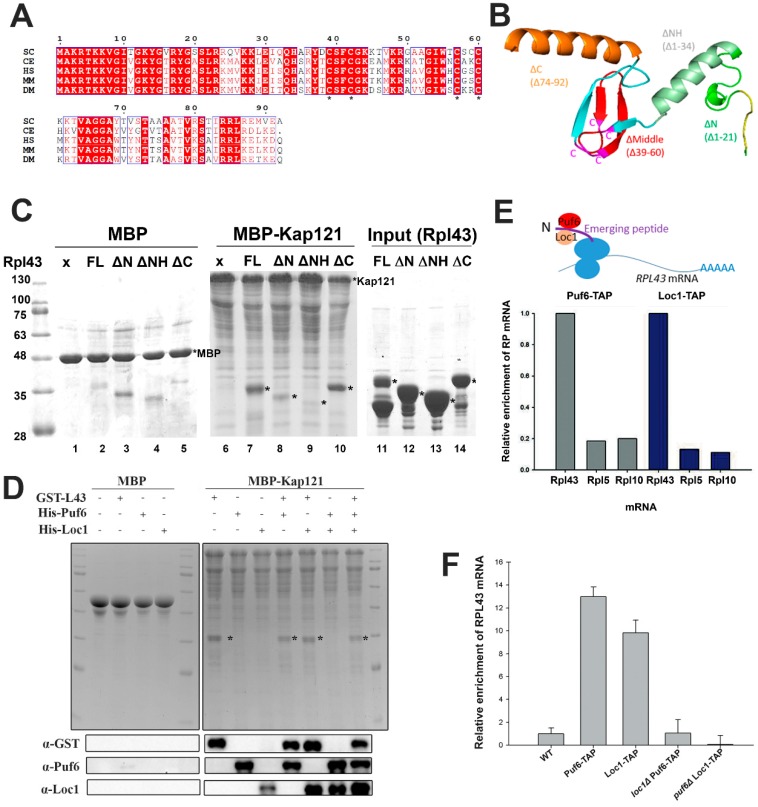Figure 3.
Puf6 and Loc1 interact with nascent Rpl43. (A) The Rpl43 sequences obtained from different species were aligned using ClustalW. SC: Saccharomyces cerevisiae (NP_015368.1); CE: Caenorhabditis elegans (NP_496957.1); HS: Homo sapiens (NP_000989.1); MM: Mus musculus (NP_033110.1); DM: Drosophila melanogaster (NP_723060.1). The conserved four cysteines are labelled with asterisks (*). (B) Rpl43 structure was adapted from PDB: 4V7F Chain k [46]. Each region generated for rpl43 mutants is shown. (C) Recombinant maltose-binding protein (MBP) and MBP-Kap121 (PKL661) proteins were immobilized on amylose resins and tested for interactions with GST-Rpl43 (PKL474), GST-Rpl43ΔN (PKL584), GST-Rpl43ΔC (PKL585), and GST-Rpl43ΔNH (PKL652). (D) The in vitro interactions were examined in MBP and MBP-Kap121 (PKL661) with Puf6-His6 (PKL56), Loc1-His6 (PKL586), and GST-Rpl43 (PKL474). (E,F) PUF6-TAP (KLY134), LOC1-TAP (KLY475), loc1ΔPUF6-TAP (KLY415), and puf6ΔLOC1-TAP (KLY842) strains were treated with 0.2 mg/mL cycloheximide for 30 min and applied in the immunoprecipitation assay. The associated RNAs were extracted and quantitated by qPCR.

